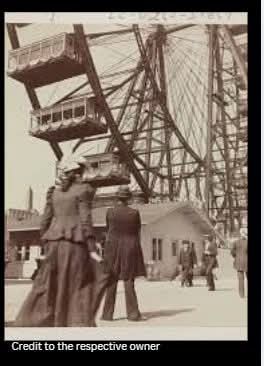At the Chicago World’s Fair of 1893, the crowds didn’t gather first around ornate pavilions or exotic exhibits. They gathered to see a colossal wheel of steel slowly turning against the skyline — the first giant Ferris wheel in history.
Designed by George Washington Gale Ferris Jr., it was America’s bold answer to the Eiffel Tower: a structure that was part ride, part engineering marvel. Rising 264 feet into the air, it carried 36 massive cars, each holding up to 60 passengers. More than 2,000 people could be lifted at once, swaying gently as Chicago and Lake Michigan stretched out below.
For many fairgoers, it was their first time seeing the world from such a height without standing on a mountain or a building. The ride wasn’t just thrilling — it was a glimpse of human ingenuity reaching higher than ever before.
A decade later, another invention would steal the world’s breath: in 1903, the Wright brothers’ flying machine lifted humanity into the sky for real. But in that summer of 1893, it was the great Ferris wheel that made people believe the impossible could be built.
